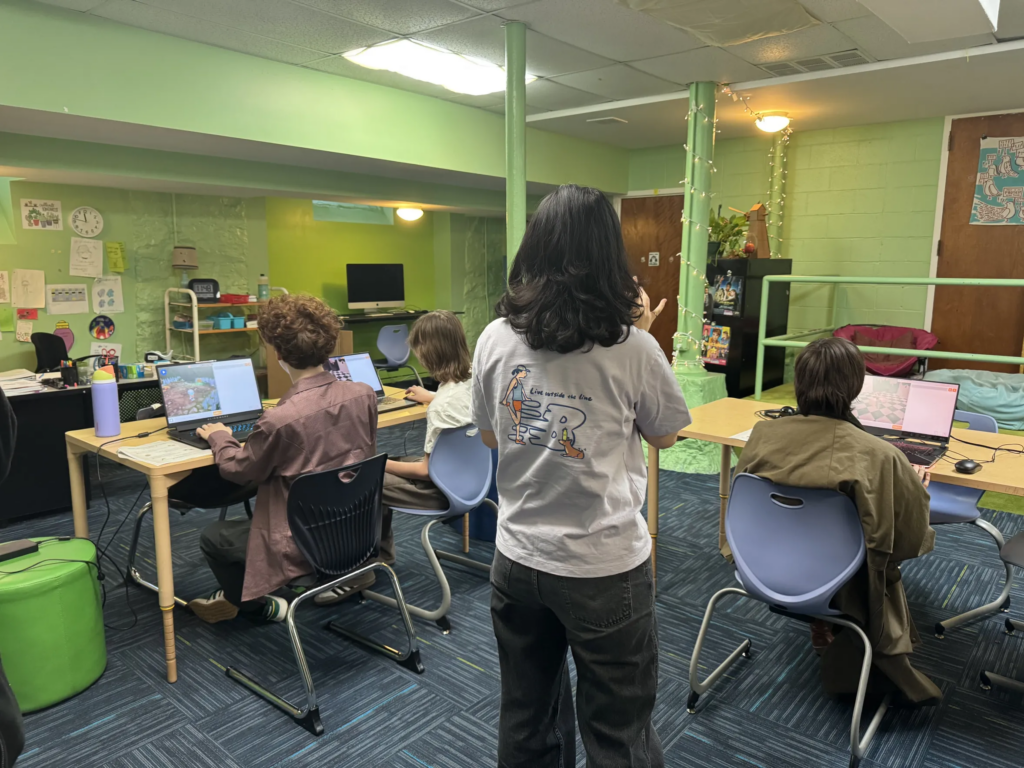For our final week, we had the opportunity to take our tool to Kentucky Avenue School for a focused playtest. This session wasn’t just about spotting bugs or refining UI—it was about evaluating the success and educational value of what we’ve built over the semester.
Testing More Than Just Features
Our goal was to see how students interacted with the tool, even with its current limitations. We wanted to understand:
- What can a student create on their own?
- Do they grasp the connection between their prompts, the generated code, and the in-game assets?
- Can they begin to engage with our core educational goal—decomposition—by understanding how their ideas break down into actionable steps?
While we didn’t expect students to suddenly master decomposition as a formal concept, we hoped they would demonstrate an intuitive understanding of how their inputs translated into outcomes.

A Successful Playtest
The playtest exceeded our expectations. With the help of our guide, students quickly picked up the basics of navigation. While they still needed occasional assistance with more complex interactions, they clearly understood the overall structure and purpose of the tool.
As seen in previous playtests, students were especially enthusiastic about adding visual effects to their stories—prompting commands like “explode” to bring their creations to life. More importantly, we observed that when students saw the codeblock fields, they were eager to experiment—using dropdown menus to change objects and recognizing how these fields corresponded to in-game assets. This demonstrated exactly the kind of relational thinking we aimed to foster, where students begin to understand how to break down creative ideas into manageable components.
Following the Ideal Creation Flow
One standout moment came when a student asked how to place a door in the forest scene. After figuring that out, he naturally progressed to thinking about how the door could lead to the castle scene. Although he needed guidance at first, he ultimately created a working story sequence—thinking at a high level, then identifying and executing the steps needed to achieve his goal. This is precisely the kind of problem-solving flow we hoped to inspire.
Wrapping Up the Semester
This playtest was a fantastic conclusion to our semester’s work. Seeing students engage with the tool—not just play with it, but think through their ideas and translate them into interactive stories—validated our design decisions and educational focus. It was rewarding to witness firsthand how our project could support creativity and computational thinking in a classroom setting.

